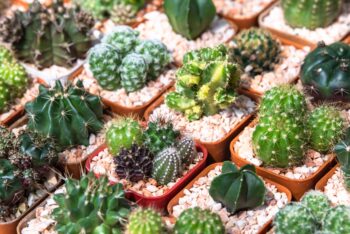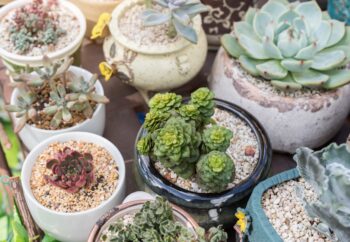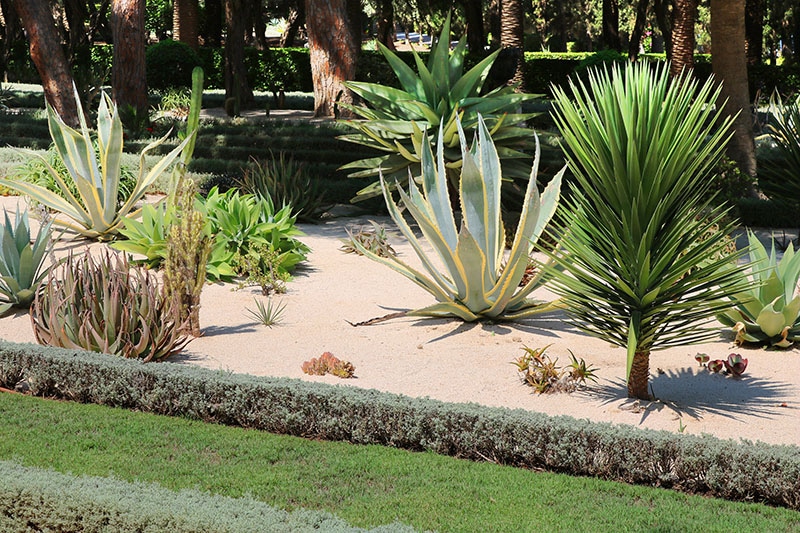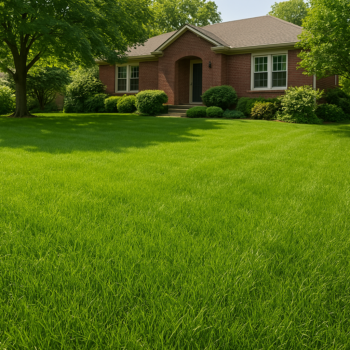The beautiful thing about succulents is that they’re extremely hardy, and therefore easy to maintain. Most succulents thrive in warm, dry climates, due to their ability to store water.
However, if you live in a region that is prone to occasional frosts, such a North Texas, you may want to keep them in a container. This way, you can bring them inside in the event of cold weather.
Let’s take a look at the most important items in caring for outdoor succulents:
Placement

Most succulents hail from desert-like regions, with plentiful sun and occasional drought. From this, we can determine what conditions they’ll thrive in, in your own landscape.
Ideally, you will pick a sunny spot that is well-drained. Because they’re so good at retaining moisture, you want to avoid waterlogging your succulents.
Low-lying areas that don’t drain well aren’t ideal, because the topsoil will hold too much water to keep your plants happy. Likewise, if you choose to place them in a container, make sure it is designed to drain effectively.
One other additional concern, with regards to placement, is the amount of space you provide. This depends largely on the specific type of succulent(s) you’ve chosen.
Some of them spread fairly rapidly as they grow. For their benefit, and for the benefit of nearby plants, you want to give them plenty of space. That includes not placing them too closely together when you first plant them.
Read about how to care for indoor succulents.
Planting and Propagating
If you’re new to the care of succulents, it’s good to know how best to establish them. If you’ve already got one to expand on, this can be done easily by using an offshoot or a leaf.
For this process, an offshoot that is already developing will simply need to be relocated. As for using a leaf instead, there are a few important steps to take:
Pick a few mature, rounded leaves.
Lay out for 3-7 days so it can callous. The callous it forms will prevent oversaturation.
Prepare a small tray full of soil. This can be as simple as a foil baking pan.
Spray the soil with a water sprayer, to fully cover the surface without saturating the entire soil bed.
Place the succulent leaves on top of the soil, and place the tray in a warm area that receives bright but indirect sunlight.
Don’t worry when the leaves begin to shrivel! This simply means they’re being used as a food source for the new sprouts that are developing.
Water lightly but regularly with the spray bottle, for 4-6 weeks.
Slowly increase sun exposure as the sprouts continue to develop.
Once they’ve “puffed out” and become more voluptuous, they’re ready to transplant to their permanent location.
FUN FACT: The tiny baby sprouts that emerge from the “parent” leaves are called pups!
Hire us for a flower bed clean-up before you plant new succulents.

Ongoing Care
As stated before, the worst thing you can do to a succulent plant is overwatering. Their delicate roots can easily become prone to root rot when there is excessive moisture in the soil.
Once again, this is a great reason to consider keeping your succulents in a container, even if you plan on keeping them outside as a part of your overall landscape.
Excessive rainfall and robust irrigation practices can be a bane to these plants, so keep that in mind when choosing where to place them.
Additionally, there are actually a few types of succulents that don’t do well in excessive heat. This may seem ironic, as they are native to desert regions. Here is a list of succulents who do not do well in long stretches of notably high temperatures.
The other aspect of desert plants that is easy to overlook is that many of them are quite cold-hardy. Desert nights can get quite brisk, so it makes sense that succulents are well-equipped for colder temperatures.
But that isn’t the case for every breed! Just to be safe, here is a list of succulents who DO tolerate extreme cold.
As for pruning, the rules for succulents are not so different than any other plants you’re caring for in your garden. If you see dead or wilting leaves, remove them to fortify the overall plant. If you see an area that’s getting too crowded with growth, do a bit of culling to thin it out.
Do you have a vision for your outdoor space? Contact us for advice on landscape design.





